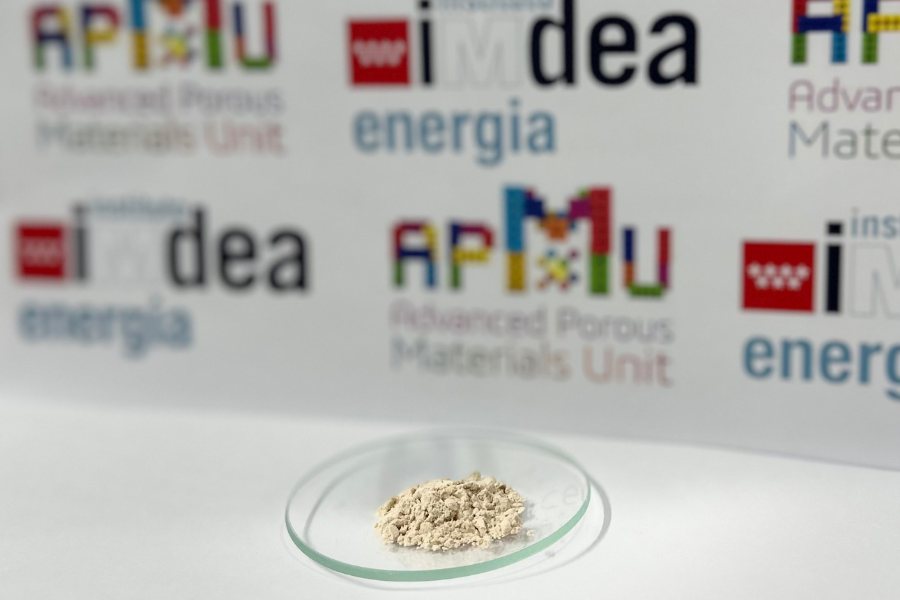How we’re improving hydrogen fuel cells to make them more durable and affordable
The transition to a sustainable economy is crucial in the fight against climate change. In this race towards a cleaner future, hydrogen fuel cells are presented as a solution to the world’s energy problem. However, they still present some challenges, such as their high cost and durability.
Research groups from Institute IMDEA Energia (Spain), the University of La Laguna (Spain), the University of Tartu (Estonia) and the Charles Gerhard Montpellier Institute (France) have combined efforts to find a potential solution. The C-MOF.Cell project emerges as a proposal for the development of efficient and affordable fuel cells for a more sustainable future.
Cells that convert hydrogen into electricity
Proton exchange membrane fuel cells, or PEMFCs, have emerged as a promising solution to address today’s energy challenges.
These electrochemical systems, consisting of a cathode, an anode and an electrolyte membrane that allows the movement of ions through the device, convert hydrogen into electricity with the emission of waste water, i.e. without emitting air pollutants and using renewable sources.
This technology has very attractive advantages when compared to other types of devices such as batteries or alkaline batteries.
PEMFCs are lighter and more compact, making them ideal for applications in portable devices such as smartphones or transportation. They are also able to store more charge, charge faster and run for longer periods of time while receiving a constant input of fuel (hydrogen).
Of course, the most remarkable feature is their low environmental impact, as they emit no greenhouse gases or pollutants.
Hydrogen-powered spacecraft
These factors have led many countries to commit to this technology and use hydrogen as an energy vector for sustainable mobility. For example, cities such as Madrid have already incorporated hydrogen-powered buses in their streets.
They are currently one of the main candidates to replace alkaline fuel cell technology.
Such is the interest in this type of technology that since the 2000s great efforts have been made to optimise its implementation in aerospace expeditions. Since NASA’s Gemini space flights, PEMFC technology is evolving by leaps and bounds, displacing the use of alkaline fuel cells in this area.
However, it still faces a number of challenges that limit its deployment. On the one hand, it is dependent on very scarce and expensive precious metals, such as platinum. On the other hand, it is very sensitive to operating conditions – variations in temperature, humidity or pressure can affect the electrolyte membrane of the battery, changing its conductivity – which affects its long-term durability and limits its viability compared to fossil fuel-based technologies.
New advanced multifunctional materials
Within the framework of the European C-MOF.Cell project, each of the research groups has contributed its unique experience and knowledge of certain innovative materials to address the challenges faced by these devices.
In the Advanced Porous Materials Unit at Institute IMDEA Energy we developed the synthesis of a class of materials known as porous coordination polymers or MOFs(Metal-Organic frameworks).
The MOFs we have developed have shown the potential to improve proton conductivity – that is, to facilitate the free movement of ions or charge carriers through the device – and membrane stability, thus addressing one of the main problems of PEMFCs.
The University of Tartu and the University of La Laguna are focusing on synthesising precious metal-free catalysts to replace platinum in the electrodes of these cells, with the aim of improving efficiency and reducing production costs.
In addition, the Charles Gerhard Montpellier Institute carries out the assembly and testing of the final device, together with simulation studies to identify the best materials for this application.
As a result of these efforts, several research papers have been published in prestigious journals with very promising results. Among the advances achieved, a bismuth-based MOF and a composite MOF based on zirconium and potassium have shown competitive proton conductivity values, similar to commercial electrolytes.
They have also succeeded in preparing electrodes based on transition metals and two-dimensional materials with high efficiency without using precious platinum.
Together, the research work of these groups has driven the development of a fuel cell in the quest for a significant advance towards more efficient and affordable PEMFCs.
A cleaner, more sustainable future
In summary, the future of PEMFCs is quite promising, but faces several major challenges that need to be addressed to reach their full potential. These include reducing production costs, improving the current hydrogen generation infrastructure, optimising its durability and efficiency, and scaling up the technology to extend its deployment.
The C-MOF.Cell project is therefore expected not only to contribute to the development of new hydrogen fuel cells, but also to meet the requirements and priorities set by the European Union through initiatives such as Horizon 2020, which promote the development of clean and sustainable technologies.



